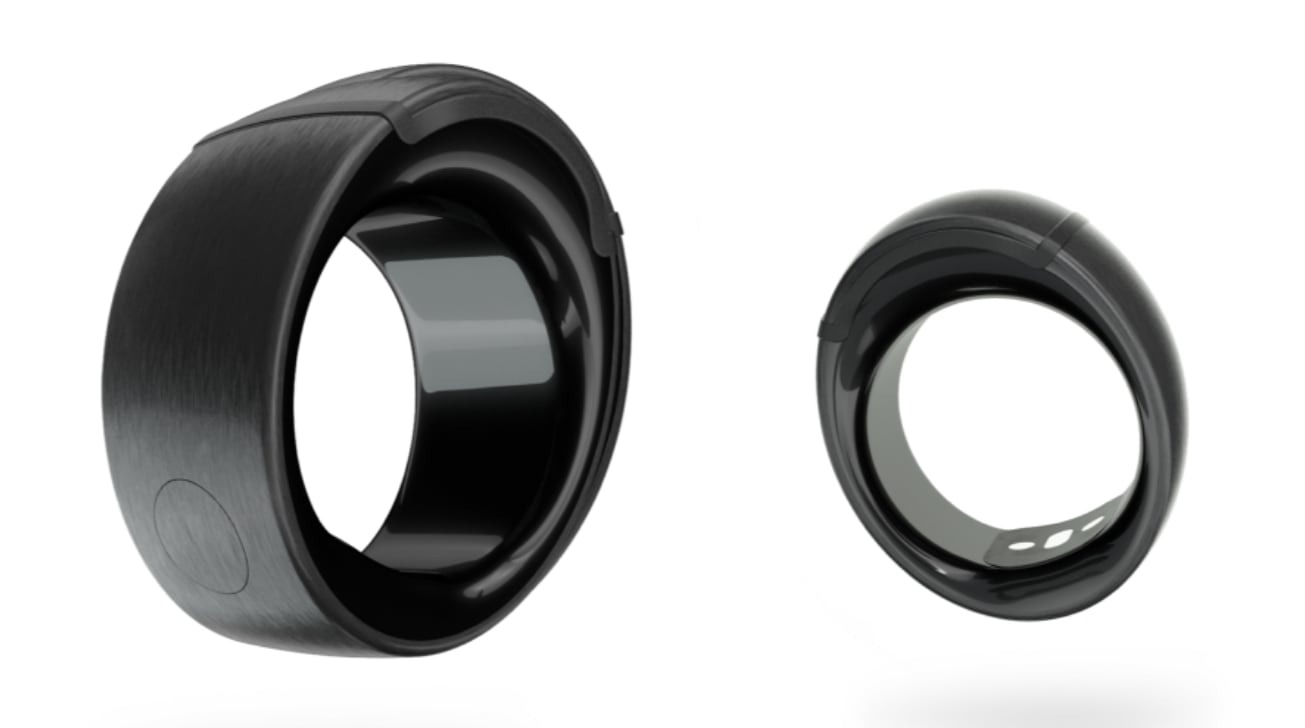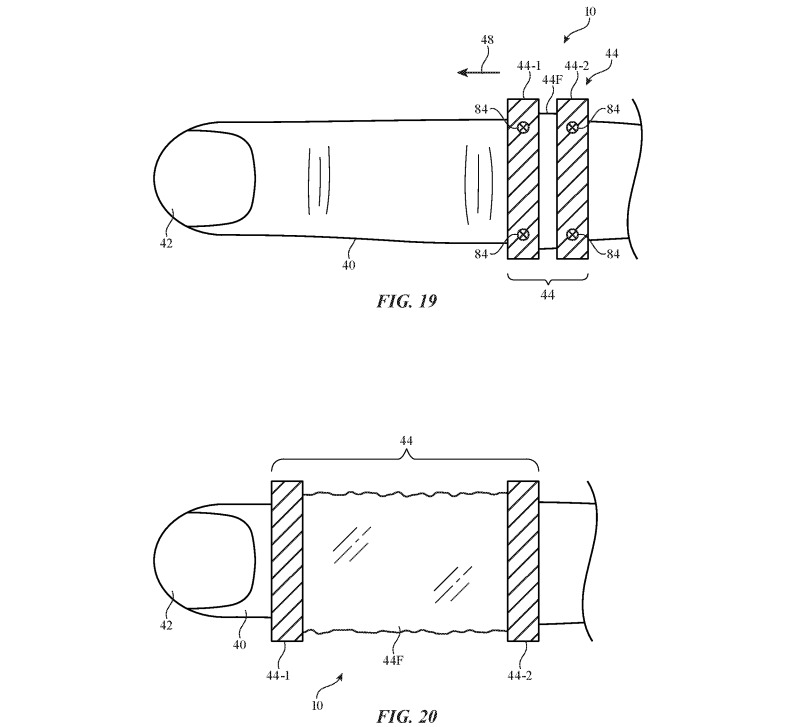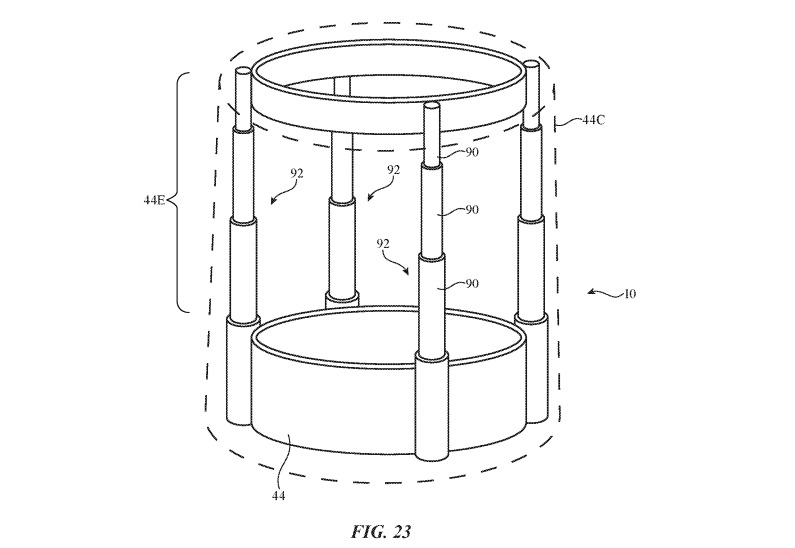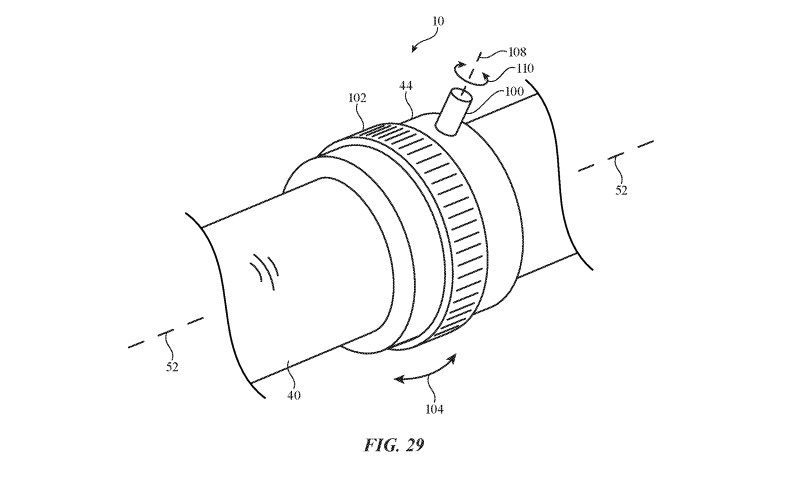Apple's smart ring may expand to cover an entire finger
An Apple Ring could feature an expandable design, one that can extend the length of the ring to make it into a finger-sized tube, allowing it to employ more sensors and perform other functions than a smaller, simple ring.
A smart ring has the potential to provide users with functionality similar to an Apple Watch, but in a smaller package that doesn't take up space on a user's wrist. While part of the challenge of designing a smart ring involves cramming components into a small space, there is also the issue of its size offering little in the way of opportunity for embedded sensors to be used due to a lack of surface area, as well as for users to accurately control it.
In a patent granted by the U.S. Patent and Trademark Office on Tuesday titled "Expandable Ring Device," Apple suggests the size of a smart ring may not necessarily be static. While the name of the patent hints at a one-size-fits-all design, the filing actually refers to ways the ring could be expanded into a longer tube that covers more of the finger, including some knuckles.
Apple's proposed use for the Apple Ring is to be used as a controller for other devices, such as a replacement for force-feedback gloves or to replace haptic feedback systems in smartphones to save battery.
The device could include a housing with a variety of sensors, including force sensors, ultrasonic sensors, inertial measurement units, optical sensors, and touch sensors, which can be used to gather input from the user. Haptic feedback could also be provided by adding vibration-creating elements within the same regions, while control circuitry would handle the transmission of information to and from a host device.
The ring may include an annular main body with an expandable portion that can extend out along the finger towards the tip. Depending on the design, this can include a flap with a hinge, a rotatable housing member, expandable nested housing segments for adjustable expansion, or other structures that can enable the extended portion to move in relation to the main body.
The extension could include an internal adjustable frame with telescoping legs and a cover, making it more rigid and ensuring touch or force inputs could be more securely detected. Sensors could be included within the extendable portion, allowing them to be accessed and used only in an expanded state, while other sensors may be accessible in both expanded and contracted states.
By extending the ring over knuckles, strain sensors on the casing could allow the ring to determine how far a finger has bent. This could enable granular control over a function as part of a physical gesture.
Apple also proposes the ring could include rotatable buttons and other input elements on the main ring housing.
Apple files numerous patent applications on a weekly basis, but while the existence of a patent indicates areas of interest for the company's research and development efforts, there is no guarantee a product or service will use the concepts in the future.
The patent lists its inventors as Paul X. Wang and Dinesh C. Mathew. Product design architect Wang has appeared on a number of Apple patents, including the single glass sheet iMac redesign and a haptic feedback system for the Apple Pencil, while Matthew is linked to a solar-powered MacBook as well as the glass Mac, among other patent filings.
Apple has looked into the possibility of using smart rings for a while, including one October 2019 design involving a finger-mounted touchscreen capable of sending commands to another nearby device. A November 2019 patent suggested a smart ring could help with detecting a user's motion for augmented reality or virtual reality.
Apple is also far from the first to market with a smart ring. Aside from smaller-scale efforts, arguably the biggest launch was Amazon's debut of the Echo Loop ring, a titanium accessory which provided users with a way to talk to Alexa from their finger, and housing a combination of button-activated microphones and a small motor for haptic feedback.
 Malcolm Owen
Malcolm Owen














 Mike Wuerthele
Mike Wuerthele

 Chip Loder
Chip Loder

 William Gallagher
William Gallagher
 Christine McKee
Christine McKee
 Michael Stroup
Michael Stroup
 William Gallagher and Mike Wuerthele
William Gallagher and Mike Wuerthele







